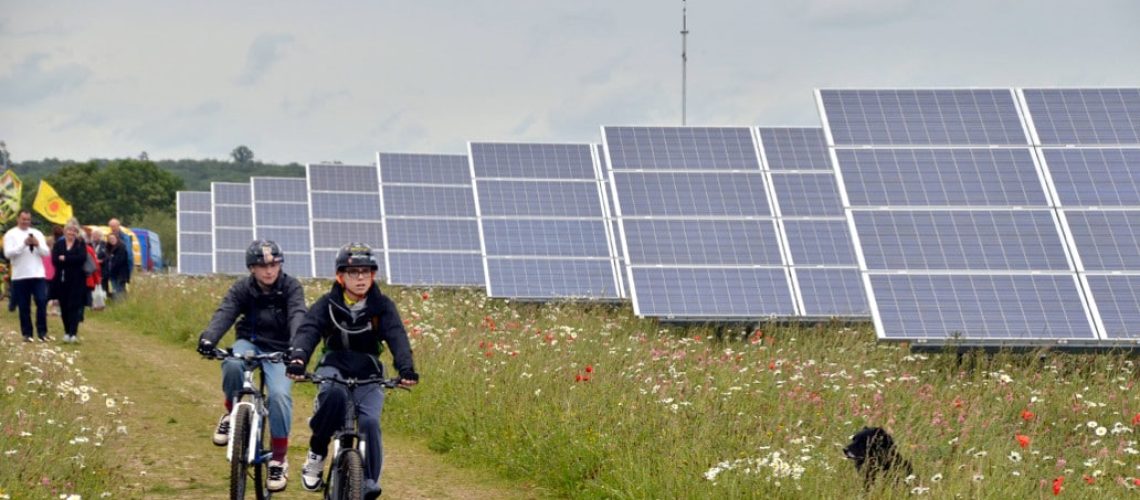Minnesota Governor Tim Walz signed HF 2310 into law, which opens up the state’s community solar program to more residential subscribers, specifically low-to-moderate income (LMI) households, and expands the project sites from 1 MW to 5 MW community gardens.
Minnesota’s community solar program has been in effect since 2013, leading to well over 826 MW of solar development across 400 sites and north of 28,000 subscribers. The state’s program has served as a rubric for other states like Illinois that have established a shared-access community solar framework that provides clean energy to residents of all income thresholds as well as small businesses and municipal offices.
However, Minnesota’s 2013 law applied only to community solar gardens (CSG) in utility Xcel Energy’s service territory, a region that amounts to 80% or more of Minnesota ratepayers.
Yesterday, Minnesota Governor Tim Walz signed HF 2310 into law, which opens up the state’s community solar program to more residential subscribers, specifically low-to-moderate income (LMI) households, and expands the project sites from 1 MW to 5 MW community gardens.
The latest framework under the state’s Environment, Natural Resources, Climate and Energy Omnibus Bill (HF 2310) updates the community solar program to require at least half of a solar farm’s generating capacity be made available to residential subscribers.
This is significant increase for the state’s residents, especially LMI households, because previously only about 14% of generation capacity from community solar gardens went to residential subscribers, compared to small businesses and other end users.
CSGs are solar fields where customers can sign up for a subscription for a share of the electricity produced to help both offset their energy use and realize savings on their monthly utility bill.
In Minnesota, consumers faced difficulty signing up for projects due to geographic siting restrictions and developers grew frustrated with limitations long overdue for changes, according to the advocacy group Coalition for Community Solar Access (CCSA).
HF 2310 addresses the limitations posed over recent years under the state’s ten-year old CSG program and ensures all Minnesotans, including renters and LMI customers can participate in the clean energy transition.
The amended community solar policy was authored by state representative Rick Hansen (District 53B, St. Paul), who also serves on committees for State and Local Government Finance, Agriculture Finance and Capital Investment.
“Minnesotans have long supported community solar — and now have full reassurance that we as a state will continue to lead the nation in providing clean energy and local economic opportunities through community solar programs,” said Minnesota Representative Patty Acomb (District 44B, Minnetonka)
Under the existing framework, subscribers were required to subscribe to CSG facilities within their same county or an adjacent one. Issues arose when areas with high demand for subscriptions reached capacity despite consumer demand, leaving many rural counties unable to host projects due to limited access to subscribers. With HF 2310, the arbitrary siting restriction has been removed, creating equal access for all Xcel Energy customers.
Another key aspect of the updated policy is the size increase for projects to 5 MW. Key to ensuring that all Minnesotans can access community solar, the new law prioritizes allocating capacity to LMI households, public interest subscribers, and affordable housing residents. Under the new framework, projects must provide at least 55% of the project’s capacity to LMI, public interest and affordable housing residents.
“Due in large part to community solar detractors, negotiations to modernize Minnesota’s community solar program, and the subsequent benefits it’d bring Minnesotans, have experienced delays year after year. This session proved to be a different story, however, as negotiating led to the passage of this fair, equitable, and sustainable set of updates to the community solar program that both charts the pathway to its success and realigns it with leading community solar markets across the country for years to come,” said Kevin Cray, senior regional director of policy and governmental affairs, CCSA.
Standard Solar operates close to 60 MW of community solar in Minnesota. Trevor Laughlin, policy and regulatory affairs analyst at Standard Solar told pv magazine USA:
This bill represents a significant milestone for the distributed generation solar plus energy storage sector and heralds a transformative era for Minnesota, a state that has consistently led the way in community solar initiatives. As an industry leader with operating assets and projects in development in the state, we are greatly encouraged by the program’s strong focus on public interest groups and its commitment to fostering participation from individuals with low-to-moderate incomes (LMI). We also commend the state’s initiative to incentivize developers to prioritize the inclusion of residential and LMI subscribers, a move that will have a profound impact on expanding renewable energy access.
Minnesota’s existing CSG program will remain open until the new program starts, so Minnesotans won’t miss out on the ability to sign up for community solar. By shifting implementation to the state Department of Commerce’s purview, the revised CSG program has boosted the state’s ability to access and leverage Greenhouse Gas Reduction funds from the Inflation Reduction Act to bring business opportunities to the local economy.
The Greenhouse Gas Reduction section of the IRA directs the Environmental Protection Agency’s administration of $27 billion in funding toward energy transition project improvements for low-income and disadvantaged communities. The program boosts the requirements of President Biden’s Justice40 initiative, which commits to providing 40% of federal clean energy benefits to disadvantaged communities.



